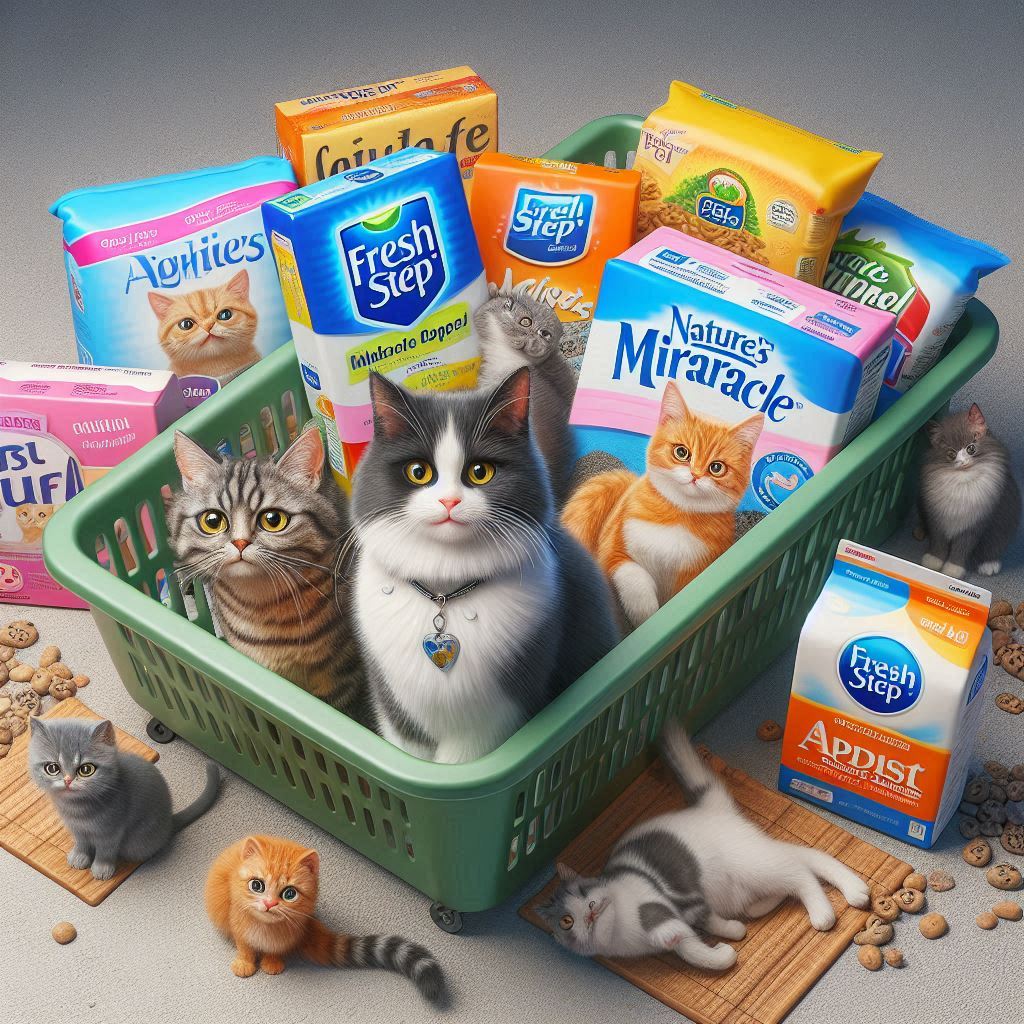Cats bring joy and companionship to our lives, but when you have multiple furry friends, managing their litter becomes a crucial part of maintaining a clean and harmonious home environment. This comprehensive guide dives deep into the strategies and techniques necessary to effectively manage cat litter in a multi-cat household.

Understanding the Challenges of Multi-Cat Litter Management
Cats are known for their individuality, and this extends to their litter box habits. In a multi-cat household, these habits can vary widely, making it challenging to maintain cleanliness and odor control. Understanding the unique challenges is the first step toward mastering litter management.
here you can find everything to train your cat
1. Behavioral Differences Among Cats
Each cat has its own preferences when it comes to litter box use:
- Preference for Texture: Some cats prefer fine-grain litter, while others may favor larger, coarser grains.
- Litter Box Type: Hooded vs. open litter boxes, high-sided vs. low-sided, automatic vs. manual cleaning—each cat may have a preference.
- Privacy Needs: Some cats prefer secluded, quiet areas for their litter boxes, while others don’t mind high-traffic areas.
Interesting post: Why is My Cat Scratching the Litter Box Excessively?
2. Odor Control Challenges
With multiple cats using the same litter boxes, controlling odors becomes paramount:
- Types of Odor Control: Litter with activated charcoal, baking soda, or natural enzymes can help neutralize odors.
- Ventilation and Airflow: Proper ventilation in the litter box area can minimize odor buildup.
- Cleaning Frequency: More cats mean more frequent cleaning to prevent odors from becoming overwhelming.
Interesting post: Putting Litter Box Outside for Lost Cat: Does It Work?
3. Space and Placement Considerations
In a multi-cat household, strategic placement of litter boxes is essential:
- Number of Litter Boxes: The general rule is one litter box per cat plus one extra to prevent competition.
- Placement Locations: Quiet, low-traffic areas away from food and water bowls are ideal.
- Accessibility: Ensure litter boxes are easily accessible, especially for older or less agile cats.
Interesting post: Comprehensive Guide to Storing Cat Litter
Choosing the Right Cat Litter
The type of litter you choose can significantly impact your cats’ litter box habits and overall comfort:
1. Types of Cat Litter
- Clumping vs. Non-Clumping: Clumping litter simplifies daily cleaning by forming solid clumps that can be easily scooped out.
- Silica Gel Crystals: Known for their superior absorbency and odor control.
- Biodegradable Options: Eco-friendly alternatives such as pine, wheat, or corn-based litters.
- Scented vs. Unscented: Some cats may prefer unscented litter to avoid potential irritants.
here is a full guide to cat litter
2. Factors to Consider When Selecting Litter
- Dust Levels: Low-dust litter is essential, especially for cats with respiratory sensitivities.
- Tracking Prevention: Litter mats or boxes with high sides can help contain scattered litter.
- Environmental Impact: Consider eco-friendly options that align with your sustainability goals.
Interesting post: Do Cats Need Light to Use the Litter Box? The Surprising Truth!
Setting Up and Maintaining Litter Boxes
Proper setup and maintenance of litter boxes are crucial for ensuring your cats’ comfort and hygiene:
1. Litter Box Setup Tips
- Size: Ensure litter boxes are spacious enough for each cat to comfortably turn around and dig.
- Depth of Litter: Most cats prefer a depth of 2-3 inches of litter.
- Types of Litter Boxes: Evaluate different styles (hooded, open, automatic) to find what works best for your cats.
2. Establishing a Cleaning Routine
Maintaining a consistent cleaning schedule is key to preventing odor buildup and ensuring your cats have a pleasant litter box experience:
- Daily Maintenance: Scoop litter boxes at least once or twice daily to remove waste and clumps.
- Weekly Cleaning: Empty litter boxes completely, scrub with mild soap and water, and replace with fresh litter.
- Monthly Deep Clean: Thoroughly sanitize litter boxes to remove any lingering odors or bacteria.
Addressing Behavioral and Health Issues
Monitoring your cats’ litter box habits can provide valuable insights into their health and well-being:
1. Monitoring Litter Box Behavior
- Changes in Frequency or Volume of Urination: Could indicate urinary tract issues or stress.
- Avoidance of Litter Box: Stressors such as new pets, changes in routine, or health problems can cause cats to avoid their litter boxes.
2. Health Considerations
- Regular Veterinary Check-ups: Routine visits can catch health issues early, including urinary tract infections or kidney disease.
- Hygiene Practices: Proper handwashing after handling litter or cleaning litter boxes is essential to prevent the spread of bacteria or parasites.
Troubleshooting Common Litter Box Problems
Even with careful management, issues may arise that require troubleshooting:
1. Litter Tracking
- Litter Mats: Place mats outside litter box entrances to trap scattered litter.
- High-Sided Boxes: Use high-side litter boxes.
2. Refusal to Use the Litter Box
- Stress Management: Identify and address stressors that may be causing litter box avoidance.
- Litter Aversion: Experiment with different litter types or box locations to find a solution.
Conclusion: Creating a Harmonious Environment
Managing cat litter in a multi-cat household requires patience, observation, and a commitment to meeting each cat’s individual needs. By understanding their preferences, maintaining a clean environment, and addressing any issues promptly, you can create a comfortable and hygienic space for both you and your beloved feline companions.

